Imagine, Shiva, the lord of destruction, being hailed as the greatest and the first environmentalist of the universe? Sounds like a plot from a latest Amish Tripathi type of fiction doesn’t it? And then you have a theory that by blowing a conch shell, one can exercise rectal muscles, prostrate, urinary tract, lower abdomen, diaphragm, chest and neck muscles. No wonder all those warriors during the times of the Mahabharata, and thereon were in excellent shape, after all, they blew a lot of conch back then.
Had this sort of discussion (of Shiva the Environmentalist and Conch as rectal reliever) taken place at some mythology or some religious conference, or programme running on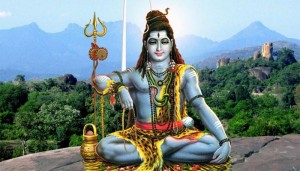 Astha TV, all would have been rather fine. But instead, these points were thrown up at the prestigious annual science congress event that took place in Mysore this year. The event is an annual jamboree that travels from one Indian city to another, apparently to promote scientific temperament within the country. Yet, the only thing that this event seems to doing is promote psuedo-relegiousness of the worst kind. Science, the empirical discipline, has taken a back seat to mythology and religion, which has no relation whatsoever with empiricism.
Astha TV, all would have been rather fine. But instead, these points were thrown up at the prestigious annual science congress event that took place in Mysore this year. The event is an annual jamboree that travels from one Indian city to another, apparently to promote scientific temperament within the country. Yet, the only thing that this event seems to doing is promote psuedo-relegiousness of the worst kind. Science, the empirical discipline, has taken a back seat to mythology and religion, which has no relation whatsoever with empiricism.
And it isn’t just a one-year thing. Last year, was even more awesome, as there was a paper presented by one of the researcher, a certain Captain Anand Bodas, who spoke about the “science” of Vimanika Shastra, and how ancient India had flying aircrafts, long long before, Leonardo da Vinci had even imagined anything similar. Or if that was not enough to amaze you, there was another paper based on the Sushruta Samhita, titled “advances in surgery in ancient India”, which described surgical instruments and claimed plastic and reconstruction surgeries were performed more than 3500 years ago!
Sadly this is what our Indian Science Congress has become in the past few years, an event of pseudoism and stupidity. With everything in it, except possibly science. Little wonder 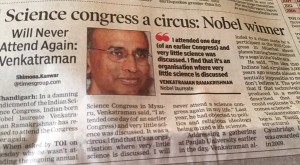 then, Indian-born Nobel laureate Venkatraman Ramakrishnan dubbed the event as “circus where very little science was discussed“, stating that he will never ever attend it.
then, Indian-born Nobel laureate Venkatraman Ramakrishnan dubbed the event as “circus where very little science was discussed“, stating that he will never ever attend it.
In the light of such howlers, does it really do us justice to carry on this sham? Should not the Indian Science Congress be banned for good, disbanded till it finds its feet and soul back? Why waste so much money on a “science event”, where there is so little science?
These questions and more such things arose in my mind, as I read the coverage about the event. In fact, the more I read, the more I was sure that this event needs to be stalled and done away with. It seemed like such a great embarrassment for our nation. We will yet again become a country of snakes and elephants, if the event continued as is? Here are the stories that I read and you can decide for yourself:
Science Takes Backseat at ‘Rehash Congress’ (New Indian Express)
The 103rd Indian Science Congress was a circus, a carnival, a curiosity generator (Scroll.in)
Lord Shiva at the Indian Science Congress (Livemint)
Benefits of Blowing Conch: IAS Officer at Indian Science Congress (Thequint.com)
Indian scientists denounce presentations at annual congress (Science Mag)
Indian Science Congress is a circus, won’t attend it: Nobel laureate V Ramakrishnan (Firstpost)
Ruminating over the silliness of Science Congress, one evening, I was driving back home. On the radio, suddenly, I heard them talking about the Science Congress, I was much piqued. Over the next 30-40 mins, the AIR station carried a detailed report on the Science Congress, featuring the speeches Prime Minister Narendra Modi, HRD Minister Smriti Irani, Technology Minister Harshvardhan, Bharatratna Dr. CNR Rao, Nobel Laureates, and a whole bunch of students who had exhibited their solutions to various national 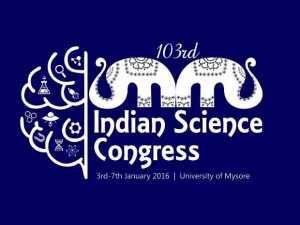 issues. On the AIR program, one could not miss the vibrancy and energy at the event. All the participants seemed to be quite excited and happy, much unlike the morose affair, I had assumed the event to be.
issues. On the AIR program, one could not miss the vibrancy and energy at the event. All the participants seemed to be quite excited and happy, much unlike the morose affair, I had assumed the event to be.
Unsettled by the radio program, I decided to do something myself. Later in the night, I called up two of my friends separately, both had been attending the event in person, and both had a very different picture to paint from the one etched in my mind. According to them, the event was much a success; there were great sessions, discussions, and keynotes. Also the pavilions put up by different companies like ONGC, DRDO and others were quite informative. And then there was the Children Science Congress, which saw tremendous participation from scores and scores of school kids.
After listening to the two first-hand accounts, I decided to delve deeper to find the speeches myself, to ascertain the relevance of the Science Congress. It was indeed a tough call, but I managed to do so. There were a website created for the event, and I went through the proceedings of the various talks and papers presented.
One thing was pretty certain to me by then, that there was a very grave mismatch on how the event was unfolding and how it was represented by the media. I also had with me the hindsight of personal experience, as I had attended the last Science Congress in Mumbai, and found it to be very enthusing. Yet, a stray presentation by Captain Bodas was chosen 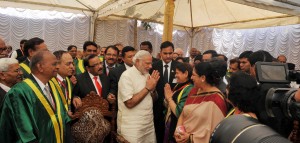 by all and sundry to dumb down the complete event. It had become the defining aspect, by which the whole event was targeted. In fact, I had even written to the editors of WSJ and NYT for the sheer misrepresentation and the erroneous reportage from the event.
by all and sundry to dumb down the complete event. It had become the defining aspect, by which the whole event was targeted. In fact, I had even written to the editors of WSJ and NYT for the sheer misrepresentation and the erroneous reportage from the event.
And so, it dawned on me. The Indian Science Congress was not really unscientific, per se; rather, certain segments (especially the media) wished to paint it so. The reason for it was not too hard to guess. Ever since, Narendra Modi had become the Prime Minister of the country, there have been many apprehensions that the right-wing agenda will be mainstream. Driven by such fears, patterns are assumed and pictures are painted. The Indian Science Congress is thus a victim of that vilification campaign.
I mean, honestly, PM Modi’s focus on 5Es (Economy, Environment, Energy, Empathy and Equity) is a very relevant one. Similarly, one would find it hard to disagree with Smriti Irani, when she raised the issue of problems faced by women who were wishing to pursue PhDs, but were caught in the issues of domesticity. She exhorted that a solution need to found for the same. Meanwhile, Harshavardhan spoke about how the Indian Railways was developing a solar train that would be at the forefront of technological breakthrough. The cherry on the cake was the talk by Dr. CNR Rao, where he asked for “crazy guys for science”. His assessment on the changing value systems and their impact on scientific 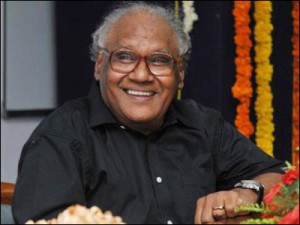 temper was quite true. He even deplored the role played by the media, which was pursued nothing intellectual or insightful. “This has to change – where scholarship, education, science becomes important, otherwise if we go on doing things what we are – where science don’t figure…we will not be doing best. Some kind of a social transformation has to happen.”
temper was quite true. He even deplored the role played by the media, which was pursued nothing intellectual or insightful. “This has to change – where scholarship, education, science becomes important, otherwise if we go on doing things what we are – where science don’t figure…we will not be doing best. Some kind of a social transformation has to happen.”
A majority of the media (the English one specifically) seems to be suffering from the quintessential Macaulay syndrome. The essential problem also seems to be our pervasive embarrassment of everything Indian. Right from the ancient times, we never really had a wedge between science and religion. The two greatest universities in the ancient times, at Nalanda and Taxila, were also the seats of religious learning. The Western abhorrence for things spiritual, never really existed in the East. We are very comfortable of talking about Sun as a star fusing together hydrogen molecules to form Helium, and also to refer to it as Suryadev travelling across the sky on a chariot drawn by 7 white horses. Religion and science for us were not like two ends of a spectrum but more like two sides of a coin. We were always comfortable  with the duality, not shocked and embarrassed by it. The segregation being driven today was completely unnecessary for us. We are very comfortable by sending an inter-planetary probe, after breaking a coconut and praying with incense sticks. That is what defines us, and who we are.
with the duality, not shocked and embarrassed by it. The segregation being driven today was completely unnecessary for us. We are very comfortable by sending an inter-planetary probe, after breaking a coconut and praying with incense sticks. That is what defines us, and who we are.
Somehow, we Indians have lost the pride and respect in our own ingeniousness and cultural aspects. For instance, as a child, whenever I would hurt myself, I would be made to drink a glass of warm milk with a spoonful of haldi in it, to bring about healing. Today, the Americans have discovered the power of turmeric, and are popping pills; we Indians will now do so. Take the case of Yoga; it had to come to us through the West. It will also be the case of Indian Classical Music and Sanskrit. Using a mythological analogy, we are like the Hanuman, before the great leap across the ocean, unsure and ignorant about our own prowess.
Coming back to the Indian Science Congress. So was it really a circus, as Nobel Laureate Venkatraman Ramakrishnan described it to be? Well, if you have one “Nobel-man” deploring the event, there were 5 other “Nobel-men” from across the world participating in the event and delivering lectures. None of them spoke against the event. In fact, one of them, Dr Manjul Bhargava (recipient of the the Fields Medal) spoke about how presentations with “questionable scientific merit” should not be used to discredit the event. “(Those) are not the ones that should attract the attention of scientists, students or media. There were many sessions of extremely high scientific quality” and that the Congress itself “has been truly spectacular as a whole”. Yet, we only heard Dr. Ramakrishnan everywhere, not Dr. Bhargava. That is tragic and not fair.
The Indian Science Congress has been in existence for over a century now, should we then let a few discordant notes upstage the whole event? Should we be embarrassed about our Indianness? Should we be shocked and depressed on talking about Shiva as an  environmentalist, or should we be able to take it with a pinch of salt? And then, before we debunk or disparage the act of playing conch-shell, should we not analyse and study it before we do? I mean, a decade or so back, the benefits of Suryanamashkara would have been laughable to many, and today, you have millions across the world doing it because of the many benefits that comes with it. Before laughing it off as something stupid and senile, can we not take a pause, and think, maybe what, there might be an iota of truth it in. After all, lest not forget the roots of modern chemistry lie in very unscientific domain of alchemy. As Albert Einstein had described his religiosity, as “an attitude of humility corresponding to the weakness of our intellectual understanding of nature and of our own being”. So, if the greatest minds of our time could be humble in accepting his ability of not knowing enough, how the hell can we be so cocksure to be able to debunk certain things as bunkum without even analysing or examining them, just because they have an element of intangible spiritualism in it?
environmentalist, or should we be able to take it with a pinch of salt? And then, before we debunk or disparage the act of playing conch-shell, should we not analyse and study it before we do? I mean, a decade or so back, the benefits of Suryanamashkara would have been laughable to many, and today, you have millions across the world doing it because of the many benefits that comes with it. Before laughing it off as something stupid and senile, can we not take a pause, and think, maybe what, there might be an iota of truth it in. After all, lest not forget the roots of modern chemistry lie in very unscientific domain of alchemy. As Albert Einstein had described his religiosity, as “an attitude of humility corresponding to the weakness of our intellectual understanding of nature and of our own being”. So, if the greatest minds of our time could be humble in accepting his ability of not knowing enough, how the hell can we be so cocksure to be able to debunk certain things as bunkum without even analysing or examining them, just because they have an element of intangible spiritualism in it?
Thus, till the time we are comfortable with ourselves and our Indianness, we should really ban and disband the Indian Science Congress. It will save us much embarrassment of making a fool of ourselves on a global scale. Otherwise, till the current government is in power, you will keep reading lurid tales of imagination (like the ones above) from every Science Congress. Next year, it is Chennai and as far as I know, the cycle will only repeat itself. How I wish self esteem could be fashioned in a lab, in some test-tube, we could then have all Indians drink it, like they do Pepsi and Coke, to make themselves comfortable with who they are and what defines them. Sadly, it can’t be, and so the denizens of the oldest living civilisation in the world carry on, trying to hide the very roots on which their consciousness rests. The inability to come to terms with “Ancient India” is the greatest tragedy of “Modern India”.
P.S. Just a note on the brilliant Nobel laureate Venkatraman Ramakrishnan. Chanced upon a brilliant blog written by Ranjani Iyer Mohanty in the WSJ back in 2011. She talks about how Ramakrishnan was disturbed by the adulation of all the kids that he had received, when he had visited the Indian Science Congress at Chennai. This is what he had to say about the experience, “I was mobbed and found it difficult to move around the hall. It was unfortunate. I could not explain to him [meaning Thomas Steitz, his co-Nobel prize winner] the advances made by Indian science because of the commotion. We are not  cricket or movie stars”. Ramakrishnan seemed to be much perturbed by the pride that Indians felt in his achievement. This seemed like a real reason why he won’t participate in the Science Congress, and not all those made up assumptions of the role of mythology and religion.
cricket or movie stars”. Ramakrishnan seemed to be much perturbed by the pride that Indians felt in his achievement. This seemed like a real reason why he won’t participate in the Science Congress, and not all those made up assumptions of the role of mythology and religion.
Now, please think, can we let a man — who holds such negative views of us and our feeling — define our assessment to an event which is held on a global scale? He might be the greatest mind in the domain of chemistry, but then I would not wish to take lessons on matters of nationalism from him. Being much younger and not fit to appraise him, all I can do is end with a couplet from Kabir, which goes something like this — Bada Hua To Kya Hua, Jaise Ped Khajoor Panthi Ko Chhaya Nahin, Phal Laage Atidoor, that can be literally translated as — in vain is the eminence, just like a date tree, no shade for travelers, fruit is hard to reach
